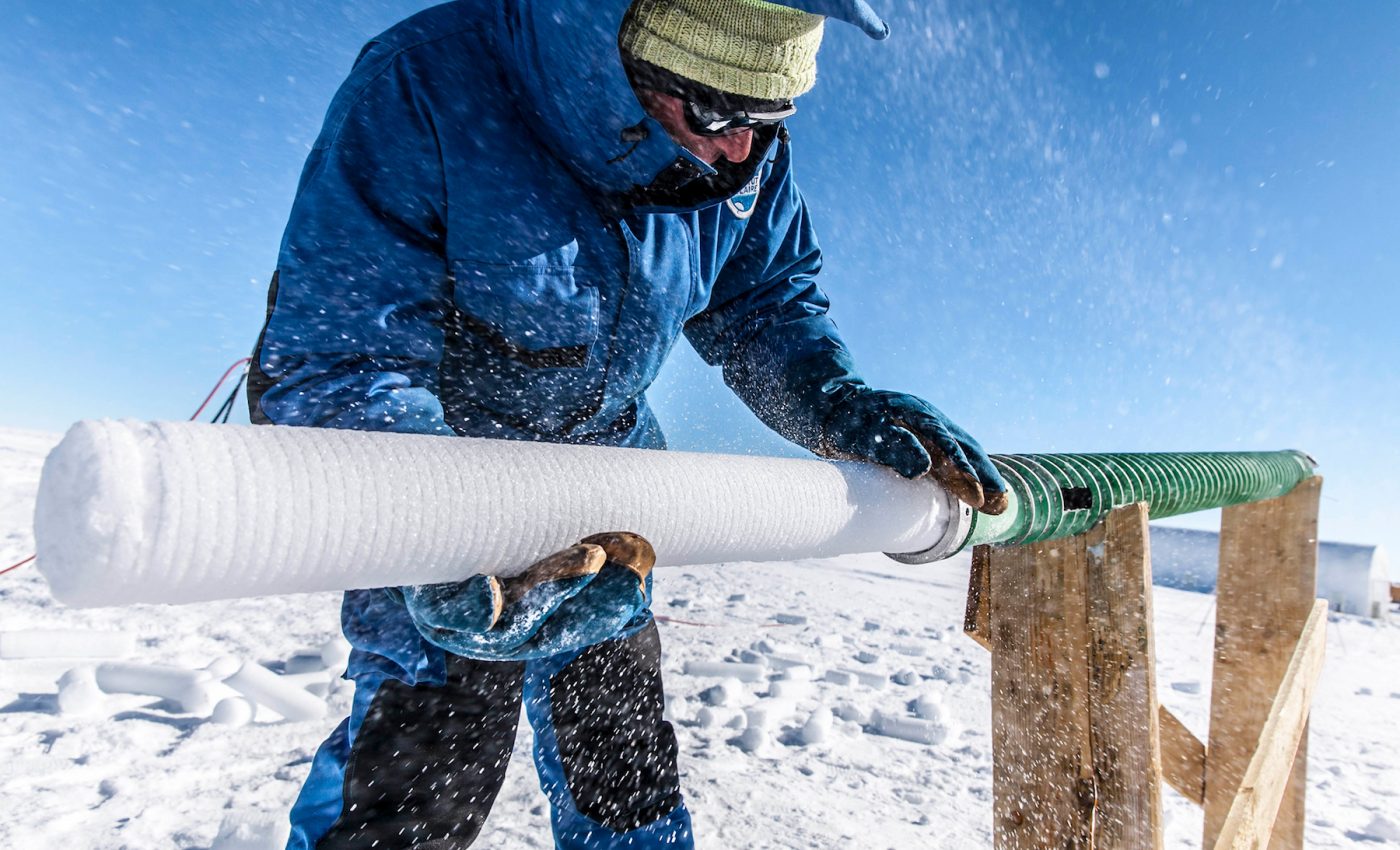
The oldest ice on Earth could reveal key insight into climate change
An international team of researchers is working to obtain Antarctic ice cores that hold a historical record of the climate over the past 1.5 million years. After searching for three years to find the ideal site, the scientists have selected “Little Dome C,” one of the coldest and most lifeless places on Earth.
The project, known as Beyond EPICA – Oldest Ice (BE-OI), is being led by Olaf Eisen from the Alfred Wegener Institute (AWI) Helmholtz Centre for Polar and Marine Research.
Little Dome C is a three hour drive by snowmobile from the Concordia Antarctic station, which is a site where researchers previously drilled more than 3,000 meters deep. The analysis of the resulting ice cores produced a climate record that dates back 800,000 years.
“During that time, there were alternating periods: long glacials and shorter interglacials, at an interval of roughly every hundred thousand years,” explained Eisen.
Tiny bubbles trapped in the prehistoric ice contain air from the time when the ice formed, which means they can be used to measure concentrations of carbon dioxide and methane. The researchers found that when the Earth’s climate was cold, there was considerably less carbon dioxide and methane in the air compared to warmer time periods.
The experts do not yet have any ice cores from the time period when the alternating rhythm between cold and warmer intervals changed significantly.
“More than 1.2 million years ago, the cycles were only roughly 40,000 years long, and were set off by regular changes in the angle of the Earth’s axis,” explained Eisen. “This was followed by a transitional period of roughly 300,000 years, before the hundred-thousand-year rhythm began, roughly 900,000 years ago.”
Testing the air bubbles trapped in the ice is the only way for scientists to gather data on carbon dioxide and methane, as well as their impact on the climate. “Accordingly, after having gathered the 800,000-year-old EPICA samples, there are very good reasons for drilling into ice that’s at least 1.5 million years old,” explained Eisen.
This would give the scientists a better understanding of the environmental conditions during the “mid-Pleistocene transition” and the 40,000-year rhythm that preceded it.
If the European Union approves the second phase of BE-OI, the drilling at Little Dome C will begin in November of 2021. The drilling will continue over three Antarctic summers until a depth of 2,730 meters is reached, where the ice should be at least 1.5 million years old.
The BE-OI presented its findings at the General Assembly of the European Geosciences Union in Vienna.
—
By Chrissy Sexton, Earth.com Staff Writer
Paid for by Earth.com
Main Image © Thibaut Vergoz












